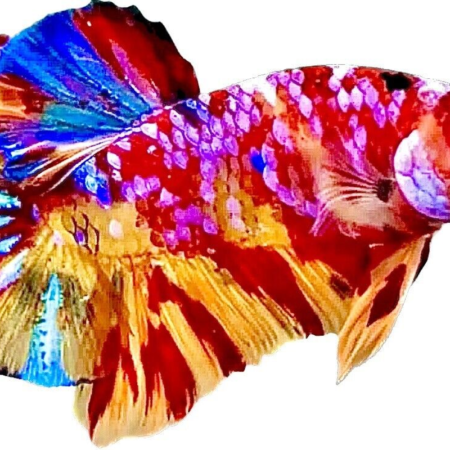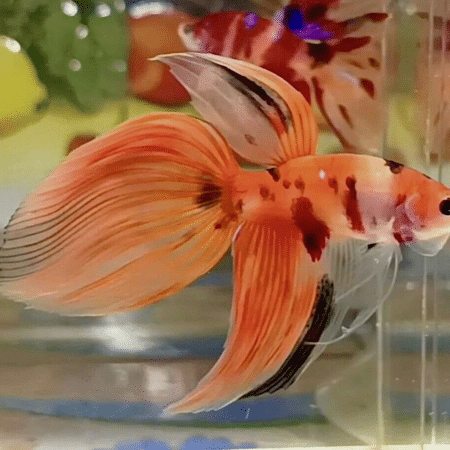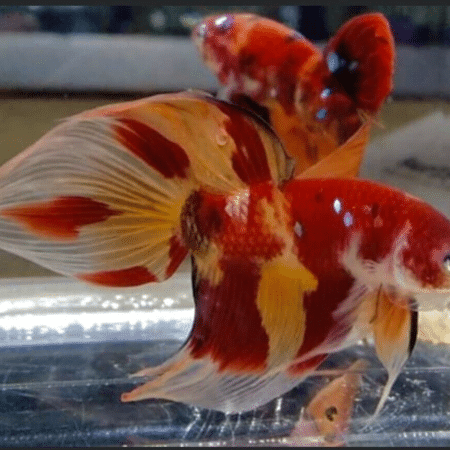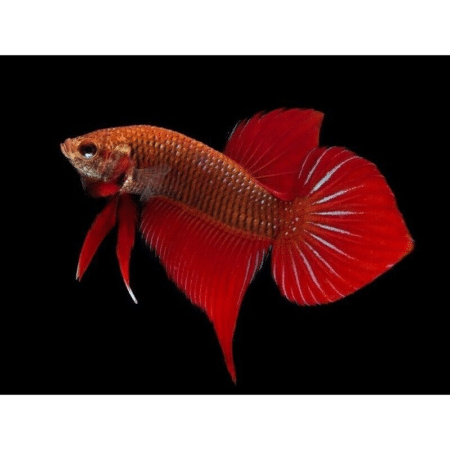Subtotal: £49.36
live Great Ramshorn Snails PE-bags, 90ml-pack.of 25pcs, Peaceful Aquarium Snails, Ideal for Breeding Betta Fish and Supporting Healthy Fish Diets in Your Tank
£43.49 Original price was: £43.49.£36.77Current price is: £36.77.
Welcome these beautiful Great Ramshorn Snails in a convenient 90ml PE-bag of 25pcs, ideal live food for Betta fish. Their vibrant colors and graceful movements enhance your aquarium’s natural beauty while promoting healthy growth. Perfect for aquarists seeking peaceful companions.
994 in stock
Species Introduction
The Great Ramshorn Snail (Planorbidae) is a fascinating aquatic creature that has captured the hearts of many aquarium enthusiasts. These snails are native to various freshwater habitats, including ponds, lakes, and marshes, where they thrive in slow-moving waters rich in aquatic vegetation. Known for their distinct coiled shells and vibrant colors, Great Ramshorn Snails are not only visually appealing but also play a vital role in maintaining the health of your aquarium ecosystem.
Key Features – Live Great Ramshorn Snails PE-bags, 90ml-pack of 25pcs
| Specification | Details |
|---|---|
| Benefits | Enhances your aquarium ecosystem |
| Quality | Premium aquarium-grade materials |
| Ease of Use | Simple setup and maintenance |
Great Ramshorn Snails are excellent scavengers, consuming algae and decaying plant matter, thus contributing to the overall cleanliness of the tank. Their adaptability to various water conditions makes them suitable for both beginner and experienced aquarists alike. With a lifespan of approximately 2 to 3 years, these snails can become a long-term addition to your aquatic family, providing ongoing benefits and enjoyment.
Care Requirements Dashboard
✓ Care Level: Easy
When caring for Great Ramshorn Snails, it is essential to provide them with the right environment to thrive. A minimum tank size of 10 gallons is recommended to ensure ample space for these snails to roam and graze. The ideal water parameters include a pH level between 7.0 and 8.0, a temperature range of 70°F to 78°F, and moderate hardness (5-15 dGH). Regular water changes of 10-15% weekly will help maintain water quality and prevent the buildup of harmful toxins. Additionally, providing plenty of hiding spots and live plants will enhance their habitat and create a more natural and enriching environment.
Natural Behavior & Temperament
Great Ramshorn Snails exhibit a calm and peaceful demeanor, making them ideal companions for a variety of fish species, including Betta fish. They are primarily herbivorous, feeding on algae, decaying plant matter, and specially formulated snail food. Observing their natural behavior can be captivating; they glide gracefully along the substrate and glass, using their muscular foot to navigate their surroundings. Their social nature allows them to coexist harmoniously with other aquatic life, provided that tank mates are not aggressive.
Tank Setup Guide
Creating an ideal environment for your Great Ramshorn Snails involves careful consideration of the tank setup. Begin with a substrate that is gentle on their soft bodies; fine gravel or sand is preferable. Incorporating live plants not only provides food but also offers hiding spots, which are crucial for their well-being. Plants such as Java Fern, Anubias, and Hornwort are excellent choices. Decorative elements like driftwood and rocks can also be included, ensuring they are smooth to prevent injury. Additionally, maintaining a gentle water flow is essential, as strong currents can stress these snails.
Water Quality Management
Maintaining optimal water quality is crucial for the health and longevity of your Great Ramshorn Snails. Regular testing of water parameters is recommended to ensure they remain within the ideal range. The pH level should be monitored closely, aiming for a neutral to slightly alkaline range (7.0 to 8.0). Temperature fluctuations should be minimized, with a stable range of 70°F to 78°F being optimal. Hardness levels should be maintained between 5-15 dGH, as these snails require calcium for shell development. Regular water changes of 10-15% weekly will help remove accumulated waste and toxins, promoting a healthy environment.
Feeding & Nutrition
Important Feeding Note
Overfeeding can lead to water quality issues.
Great Ramshorn Snails are primarily herbivorous, thriving on a diet rich in plant matter. They enjoy grazing on algae, which naturally occurs in the aquarium, but supplemental feeding is essential for their health. High-quality algae wafers, blanched vegetables (such as zucchini and spinach), and specially formulated snail food can provide the necessary nutrients for growth and vitality. A feeding schedule of 2-3 times a week is recommended, ensuring that any uneaten food is promptly removed to prevent water quality degradation.
Compatibility Guide
Great Ramshorn Snails are known for their peaceful nature, making them compatible with a wide range of fish species. They can coexist harmoniously with community fish such as Betta fish, tetras, guppies, and rasboras. However, it is essential to avoid aggressive or overly territorial species that may view the snails as a threat or snack. When introducing new tank mates, it is advisable to monitor interactions closely to ensure a peaceful coexistence.
Health & Wellness
Monitoring the health of your Great Ramshorn Snails is vital to ensuring their well-being. Common issues include shell erosion, which can occur due to low calcium levels or poor water quality. Providing a calcium supplement, such as crushed coral or cuttlebone, can help prevent this issue. Signs of stress or illness may include a retracted body, lack of movement, or discoloration of the shell. Regular observation of their behavior and physical condition will allow for early detection of any issues.
Breeding Information
Breeding Great Ramshorn Snails can be a rewarding experience for aquarists. These snails are hermaphroditic, possessing both male and female reproductive organs, which allows for easy reproduction in a suitable environment. To encourage breeding, it is essential to maintain optimal water conditions and provide plenty of food. During the breeding process, the snails will lay clusters of eggs on surfaces such as glass, plants, or decorations.
Acclimation Process
Introducing Great Ramshorn Snails to your aquarium should be done with care to ensure a smooth acclimation process. Begin by floating the sealed bag containing the snails in the aquarium for about 15-20 minutes to equalize the temperature. After this, gradually introduce small amounts of aquarium water into the bag every 5 minutes for about 30 minutes. This gradual process helps the snails adjust to the new water parameters without causing shock.
Long-term Care
Caring for Great Ramshorn Snails over the long term requires a commitment to maintaining their environment and monitoring their health. With a lifespan of 2 to 3 years, these snails can be a delightful addition to your aquarium for years to come. Regular water testing and maintenance are crucial to ensure they thrive.
Natural Habitat Recreation
Recreating the natural habitat of Great Ramshorn Snails in your aquarium can enhance their well-being and overall health. These snails thrive in environments rich in vegetation, providing both food and shelter. Incorporating a variety of live plants will mimic their natural surroundings and create a sense of security.
Seasonal Care Adjustments
As seasons change, so too may the conditions within your aquarium. It is essential to adjust care practices to accommodate these changes, ensuring the health and well-being of your Great Ramshorn Snails. In warmer months, be vigilant about water temperature, as higher temperatures can lead to decreased oxygen levels.
Expert Tips
For those looking to enhance their care for Great Ramshorn Snails, consider implementing a few expert tips. First, ensure that your tank is well-planted, as this will not only provide food but also create a more natural environment. Regularly check for algae growth, as this serves as a primary food source for your snails.
Troubleshooting
Should you encounter any issues with your Great Ramshorn Snails, it is essential to address them promptly to ensure their well-being. Common problems include shell erosion, which can be caused by low calcium levels or poor water quality. If you notice a decline in activity or changes in behavior, it may indicate stress or illness.
Scientific Background
The Great Ramshorn Snail belongs to the family Planorbidae, which encompasses a diverse group of freshwater snails. These snails are characterized by their distinctive coiled shells. Understanding the scientific background of Great Ramshorn Snails can enhance your appreciation for these creatures and their contributions to aquatic ecosystems.
Advanced Care Techniques
For those looking to elevate their care for Great Ramshorn Snails, consider implementing advanced techniques that promote optimal health and growth. One effective method is to establish a dedicated breeding tank, where conditions can be tailored to encourage reproduction.
Frequently Asked Questions
Q: What tank size is required for Great Ramshorn Snails?
Great Ramshorn Snails are quite adaptable and can thrive in various tank sizes. A minimum tank size of 20 litres is generally recommended for a small group, allowing ample space for movement and grazing. These snails are peaceful and can coexist with a variety of fish species. However, ensuring that the tank is not overcrowded will help maintain water quality and reduce stress levels. A larger tank can also provide more stable water parameters, which is beneficial for their health. Remember to regularly monitor and maintain the water quality to create an optimal environment for your aquatic companions.
✓ Expert Tip
Consider providing ample hiding spots and plants to mimic their natural habitat, as this will encourage natural behaviour and reduce stress.
Q: What water parameters do Great Ramshorn Snails require?
Great Ramshorn Snails thrive in water conditions that are stable and well-maintained. The ideal water temperature should range between 20-25°C, with a pH level between 6.5 and 8.0. They prefer moderately hard water, as calcium is essential for their shell development. Regular testing of water parameters is crucial to ensure they remain within these ranges. Sudden changes in water quality can stress these snails, potentially leading to health issues. Implementing a consistent maintenance routine, including partial water changes, will help maintain the desired parameters and promote a healthy environment.
✓ Expert Tip
Utilise a water conditioner to remove harmful chemicals from tap water during changes, ensuring a safe environment for your snails.
Q: How often should I feed Great Ramshorn Snails?
Feeding Great Ramshorn Snails should occur 2-3 times a week, with care taken not to overfeed. These snails are herbivorous and enjoy a diet consisting of algae, plant matter, and specially formulated snail food. You can supplement their diet with blanched vegetables like zucchini or spinach, which they relish. Monitor their consumption to prevent food waste, as uneaten food can deteriorate water quality. Adjust feeding amounts based on the number of snails and the presence of algae in the tank, as they can often graze on algae naturally available in the aquarium.
✓ Expert Tip
Introduce a feeding schedule that coincides with your aquarium’s lighting cycle to optimise their feeding behaviour.
Q: What are the best tank mates for Great Ramshorn Snails?
Great Ramshorn Snails are generally peaceful and can coexist with a variety of fish species. Ideal tank mates include smaller, non-aggressive fish such as tetras, guppies, and rasboras. Avoid keeping them with larger, more aggressive fish that may view them as food or disturb their habitat. Additionally, ensure that tank mates do not consume or damage the snails’ delicate shells. Providing a well-planted aquarium can also create hiding spots for the snails, allowing them to feel secure and thrive alongside their companions.
✓ Expert Tip
Observe interactions between snails and new tank mates initially to ensure compatibility and adjust as necessary.
Q: How do I properly acclimatise Great Ramshorn Snails to my aquarium?
Acclimatising Great Ramshorn Snails is crucial for their health. Begin by floating the sealed bag containing the snails in your aquarium for about 15-20 minutes to equalise the temperature. Following this, gradually mix small amounts of aquarium water into the bag every 5 minutes for approximately 30 minutes. This process helps the snails adjust to the water parameters in your aquarium. After acclimatisation, gently release the snails into the tank, avoiding adding bag water to prevent introducing any contaminants. This careful approach will minimise stress and help your snails thrive in their new environment.
✓ Expert Tip
Always acclimatise snails slowly to avoid shock; rushing this process can lead to health complications.
Q: What are the signs of healthy Great Ramshorn Snails?
Healthy Great Ramshorn Snails exhibit a firm, intact shell, which is crucial for their protection. They should be actively moving and foraging, showing interest in their environment. A healthy snail will also have a clear, moist body and will not display signs of distress such as being withdrawn or inactive. Regular grazing on algae or food indicates a good appetite, which is another sign of health. If you notice any irregularities in their behaviour or shell condition, it may indicate underlying health issues that require prompt attention to ensure their well-being.
✓ Expert Tip
Regularly inspect your snails for any signs of shell damage or health issues, as early intervention can often resolve problems.
Q: How do I successfully breed Great Ramshorn Snails?
Breeding Great Ramshorn Snails is relatively straightforward, as they are hermaphroditic, meaning each snail has both male and female reproductive organs. To encourage breeding, provide a suitable environment with stable water parameters and abundant food sources. You may observe egg clusters attached to surfaces in the tank; these eggs will hatch in approximately 2-4 weeks, depending on water temperature. Ensure that the young snails have access to food and safe hiding spots to thrive as they grow. Regularly monitor their development to ensure a healthy population.
✓ Expert Tip
Consider maintaining a separate breeding tank to manage the population effectively and protect the young snails.
Q: What temperature should I maintain for Great Ramshorn Snails?
Maintaining a consistent temperature between 20-25°C is ideal for Great Ramshorn Snails. This temperature range promotes their activity and overall health. Fluctuations outside of this range can lead to stress and health complications. Consider using a reliable aquarium heater and thermometer to monitor and maintain the temperature effectively. It is also beneficial to avoid placing the aquarium in direct sunlight or drafty areas, as these can cause temperature spikes or drops. Regular checks will help ensure a stable environment for your aquatic companions.
✓ Expert Tip
Utilise an aquarium heater with a thermostat to maintain optimal temperature consistently.
Q: How long do Great Ramshorn Snails typically live in captivity?
In captivity, Great Ramshorn Snails can live up to 2-3 years, provided they are cared for in optimal conditions. Factors such as water quality, diet, and tank environment significantly influence their lifespan. Regular maintenance and monitoring of water parameters, including pH and hardness, are crucial for their longevity. Additionally, ensuring a well-balanced diet rich in calcium will support shell health and overall vitality. Snails that are stressed or face unsuitable living conditions may have shorter lifespans, so providing a stable and nurturing environment is essential.
✓ Expert Tip
Invest in a quality water testing kit to help you maintain optimal water conditions for your snails.
Q: What type of substrate is most suitable for Great Ramshorn Snails?
Great Ramshorn Snails prefer a soft substrate that allows for easy movement and grazing. Fine gravel or sand is ideal, as it mimics their natural habitat and prevents damage to their delicate bodies. Avoid sharp-edged substrates that could harm the snails. Additionally, providing a substrate that allows for plant growth can enhance their environment, offering both food sources and hiding spots. Regular cleaning of the substrate is important to prevent waste accumulation, which can negatively impact water quality. This will ensure a healthy living space for your aquatic companions.
✓ Expert Tip
Consider adding leaf litter or decaying plant matter to the substrate, as this can provide additional food sources for your snails.
Q: What behavioural patterns should I expect from Great Ramshorn Snails?
Great Ramshorn Snails are generally active and curious creatures. They spend much of their time grazing on algae and biofilm, which is essential for their diet. You may observe them exploring their environment, often moving along tank surfaces and plants. They typically exhibit a nocturnal pattern, being more active during the evening and night. During the day, they may retreat to hiding spots or remain stationary. Understanding these behavioural patterns can help you create a suitable environment that caters to their needs, ensuring they feel secure and comfortable in their home.
✓ Expert Tip
Introduce a variety of surfaces for grazing, such as rocks and plants, to keep them engaged and promote natural behaviours.
Q: How can I prevent common diseases in Great Ramshorn Snails?
Preventing diseases in Great Ramshorn Snails primarily revolves around maintaining optimal water quality and a balanced diet. Regular water changes and monitoring of parameters such as pH, hardness, and ammonia levels are essential. Avoid overfeeding, as leftover food can deteriorate water quality and lead to health issues. Additionally, ensure that the tank is not overcrowded, which can increase stress and susceptibility to disease. Keeping an eye on their behaviour and physical condition will help you identify any potential issues early, allowing for prompt intervention when necessary.
✓ Expert Tip
Quarantine new snails before introducing them to your main tank to prevent the spread of any potential diseases.
Q: What lighting conditions do Great Ramshorn Snails prefer?
Great Ramshorn Snails do not require intense lighting, as they thrive in low to moderate light conditions. High-intensity lighting can promote excessive algae growth, which may lead to poor water quality. A lighting schedule of 8-10 hours a day is generally sufficient, allowing for a day/night cycle that mimics their natural habitat. This moderate lighting also supports plant growth, providing additional grazing opportunities for the snails. Adjusting the light intensity based on the needs of your aquarium inhabitants will help create a balanced environment.
✓ Expert Tip
Consider using a timer for your aquarium lights to ensure consistent lighting schedules, which can greatly benefit both plants and snails.
Q: How do I recognise stress in Great Ramshorn Snails?
Recognising stress in Great Ramshorn Snails can be crucial for their welfare. Signs of stress may include withdrawal into their shells, excessive hiding, or reduced activity levels. If snails are not grazing or exploring, it may indicate discomfort in their environment. Additionally, shell deterioration or discoloration can suggest poor water quality or health issues. Monitoring their behaviour and physical condition regularly will help you identify stress early and make necessary adjustments to their environment or care routine.
✓ Expert Tip
If you notice signs of stress, consider checking water parameters and tank mates to ensure a harmonious environment.
Q: What natural habitat conditions should I replicate for Great Ramshorn Snails?
To provide a suitable environment for Great Ramshorn Snails, replicate their natural habitat by offering a soft substrate, plenty of plants, and hiding places. They thrive in freshwater environments with gentle water flow, mimicking slow-moving streams or ponds. Including live plants not only offers grazing opportunities but also contributes to water quality. Ensure that the water parameters, such as temperature and pH, remain stable, as these are critical to their health. Regular maintenance of the tank will help maintain these conditions, creating a thriving environment for your aquatic companions.
✓ Expert Tip
Incorporate natural materials like driftwood and rocks to enhance the aesthetic and functional aspects of their habitat.














Emily Carter (verified owner) –
Having recently added these live Great Ramshorn Snails to my aquarium, I couldn’t be happier! I purchased the 90ml pack of 25 pieces, and after a week of watching them thrive, I can genuinely say these little guys are a delight. My Betta fish, who can be quite picky, seems to enjoy interacting with them rather than just gobbling them up. It’s fascinating to see how they clean up algae and detritus, contributing to a healthier tank environment. I also appreciate that they’re a natural food source for my fish, promoting their well-being without relying on processed feeds. Compared to other live foods I’ve tried, which often arrived in less-than-ideal condition, these snails were well-packaged and lively upon arrival. My only minor concern is that I wish I had more information on ideal tank conditions for them, but they seem to be adapting beautifully. Overall, I’d highly recommend these to any fish enthusiast, especially those with Betta fish or anyone looking to add some character to their aquarium with active aquarium snails. Can’t wait to purchase again and see how they continue to flourish!